How to do Namibia
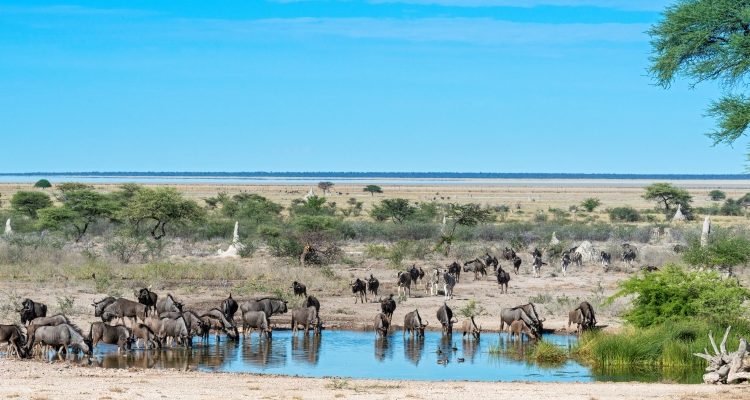
Namibia is a remarkable country in so many ways, not least its size and small population. Around two million people are scattered across a land mass larger than France and Spain combined, so it’s no wonder that settlements are few and far between, and the locals are always pleased to see someone.
With ever-changing landscapes, wonderful light, and incredible scenery, Namibia is far from a barren wasteland or a one-trick pony; it has desert adapted wildlife aplenty, rich seas along the Atlantic seaboard, and a surprising variety of incredibly beautiful places to visit. There are a few honeypot destinations which include the immense dunes at Sossusvlei, and Etosha National Park, and then plenty more that are less well-known but of equal merit. In all cases, the provision of accommodation is relatively limited, and the smaller, high quality lodges we most like are few in number and get booked up early.
There are various ways to enjoy all on offer here, the below is just a selection of ideas:
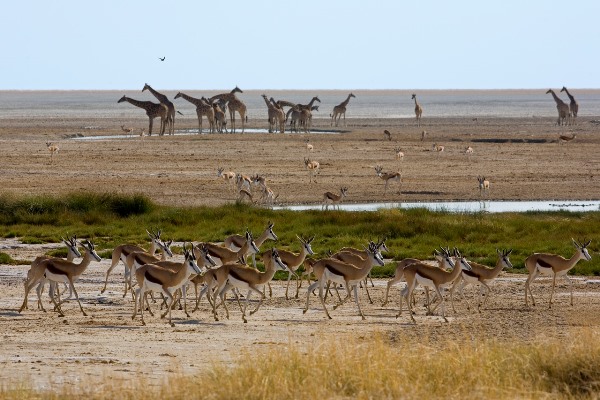
Wildlife in Etosha National Park. Little Ongava
The Self Drive Holiday
Namibia is a superb destination for driving yourself, with good roads, epic and ever changing scenery and very little traffic. It can feel like you are on a real adventure as you steer your 4×4 along a gravel road towards the distant horizon. In general, it’s worth allowing two weeks for such a trip, to allow time to stop and enjoy each destination and to include places such as Sossusvlei (Desert Homestead or Kwessi Dunes Lodge), Swakopmund (Cornerstone Guesthouse), Damaraland (Etendeka Mountain Camp or Camp Onduli), the Etosha region (one of the rest camps or for more comfort Ongava Lodge), and the Central Highlands (Okonjima Plains Camp) as an ideal waypoint on the way back to Windhoek.
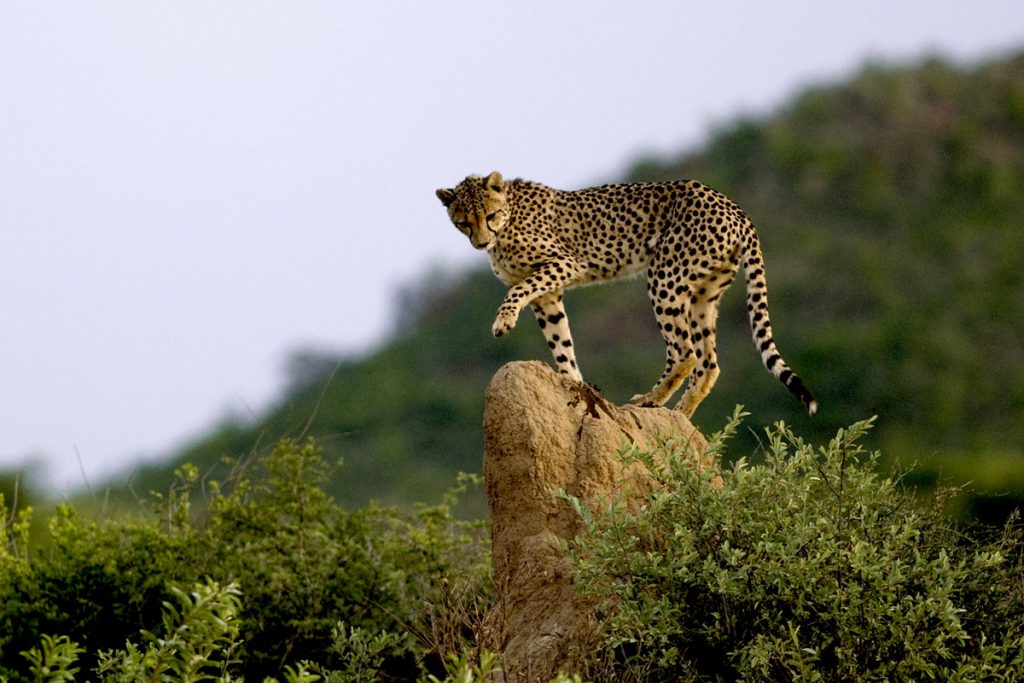
Cheetah at Okonjima Plains Camp
The Guided Safari
Having a professional guide to accompany you through Namibia is like having a talking encyclopaedia alongside you, someone to open up the secrets of the land you’re travelling through, and enrich every day with information about people, places, history, and nature. The added bonus is that he or she also drives, looks after timings, and liaises with the lodges to make sure you get good service and rooms.
With a guide on board you can also access harder to reach parts of the country, and a good itinerary might include some of the following:
In the Namib Desert close to Sossusvlei, Kulala Desert Lodge or Camp Sossus.
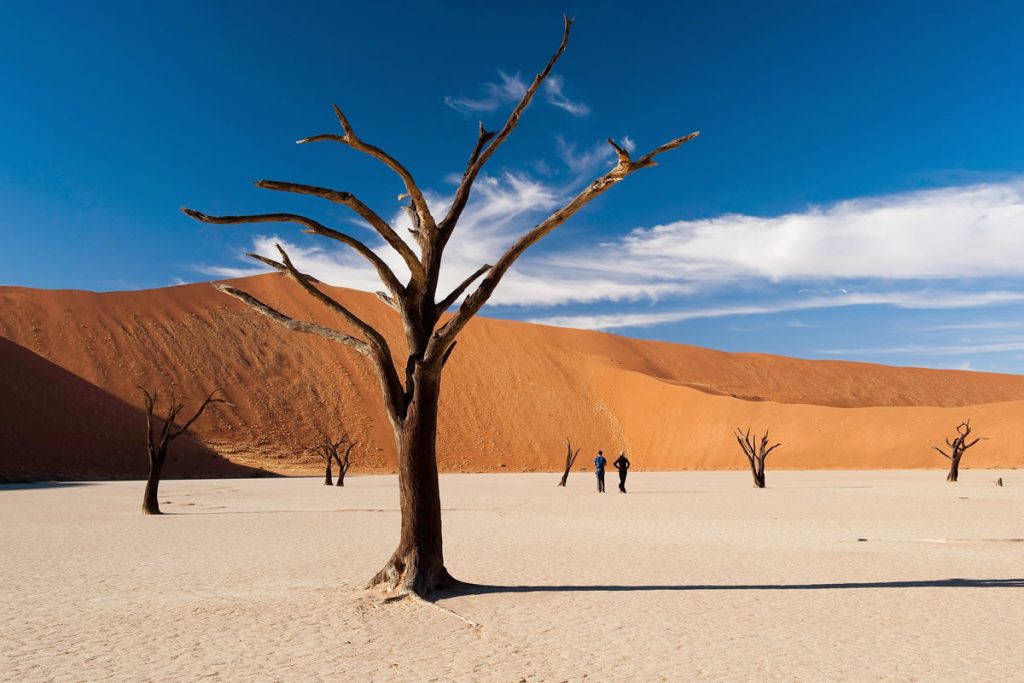
Glorious scenery around Sossusvlei. Kulala Desert Lodge
Swakopmund is a good stopover, and whether you would like to explore Sandwich Harbour or keep going to the north, it makes sense logistically to have a night here.
Far up the Skeleton Coast, Shipwreck Lodge is a fantastic addition to a guided trip. Heading inland Hoanib Valley or Huab Under Canvas are great next-stops, both needing excellent off-road driving skills to reach. Back in the relative civilisation of Etosha and its environs, Onguma Tree Top Camp is a super place to see wildlife.
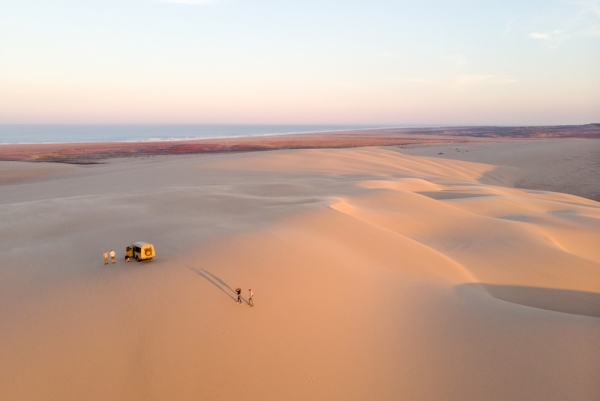
Exploring in the dunes close to Shipwreck Lodge
It’s a long drive from Etosha back to Windhoek, so it’s good to break the journey before flying home. Okonjima Bushcamp and Epako Safari Lodge are lovely options for some relaxation and optional activities, and conveniently located to allow an easy journey to the airport the following day.
If you’d rather enjoy greater exclusivity, Little Kulala, Kwessi Dunes Lodge, the Wolwedans collection camps, Sossusvlei Desert Lodge, and the little gem that is Camp Sossus all get snapped up early since they are so good. As they are in private conservancies, there are many more activities on offer, more freedom to be out in the wild at any time of day, and many fewer people and vehicles to share these amazing landscapes with.
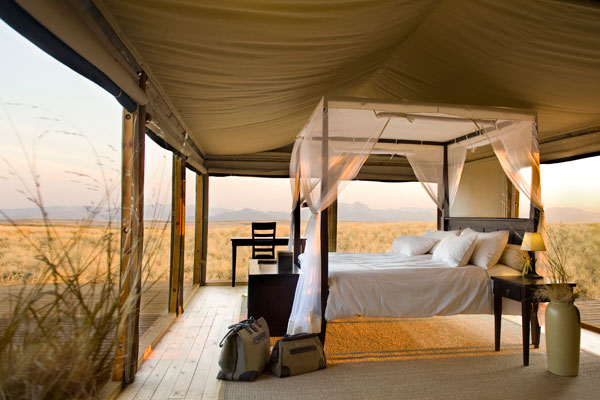
Elegant tented accommodation at Wolwedans
The luxury fly-in safari
This is the best way to get to the most remote places and to enjoy truly exclusive wilderness, and it’s relatively easy to do thanks to the excellent network of light aircraft flights. Regions and properties that fit into this category include:
Namib Desert and Sossusvlei; a combination of Wolwedans Dunes Camp and Wolwedans Boulders Camp offers the perfect insight into life in this magnificent part of Namibia, along with fantastic accommodation and a wide variety of activities.
Damaraland; Hoanib Skeleton Coast Camp is the Skeleton Coast in a nutshell, and as well as the chance to see more wildlife than expected it includes a visit to the ocean shore during a three night stay. Desert Rhino Camp is a wonderful place for tracking desert adapted black rhino in remote arid wilderness.
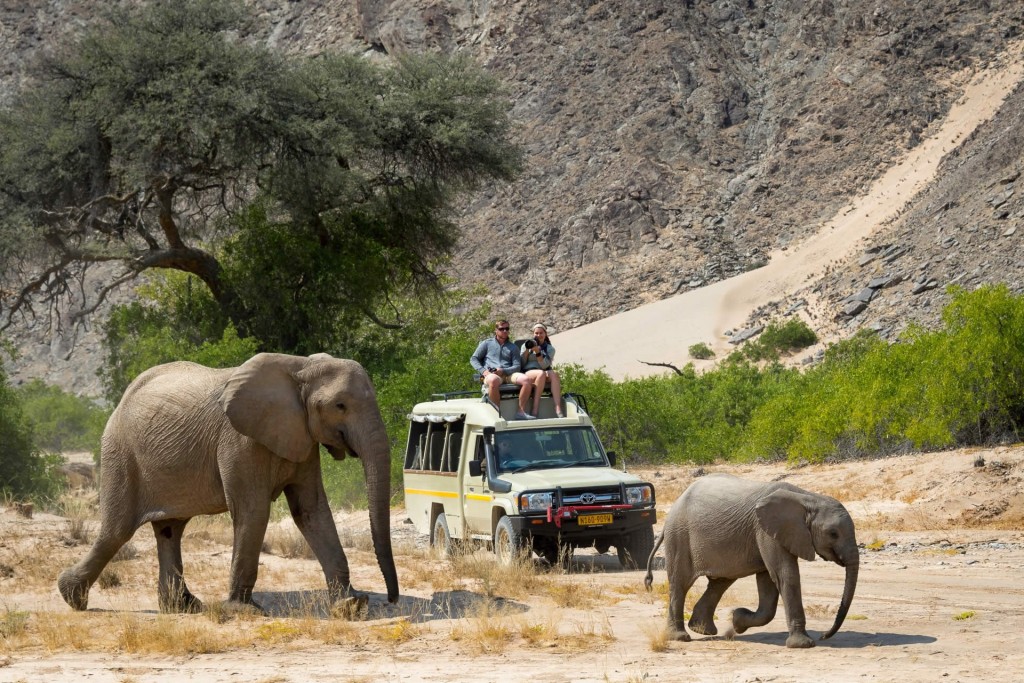
Desert adapted elephant close to Hoanib Skeleton Coast Camp
Kaokoland; In the far north of Namibia, perched right over the Kunene River and the border with Angola is Serra Cafema. It’s an astonishing place, a ribbon of water edged by forest and grasses, at the end of hundreds of miles of intensely arid desert, threading its way through range upon range of mountains. The approach to the camp is only by air, and it takes a long time. Even the airstrip is 40 minutes away, but when you crest the edge of the Hartmann Valley and see the river far below, you know that your decision to visit was exactly the right one. To give a feel for the scale of Namibia, the return flight to Windhoek takes about three hours.
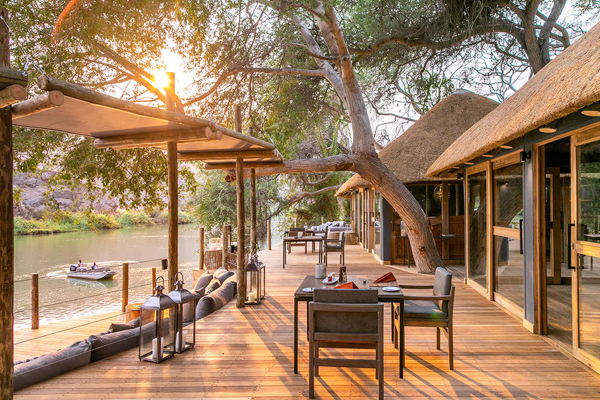
Serra Cafema on the banks of the Kunene River
The Ultimate Namibia Safari
Skeleton Coast Flying Safaris offer the most extraordinary access to remote and private parts of Namibia that no one else sees. Spend three nights in three locations, and the days buzzing from highlight to highlight in your own little Cessna aircraft with some of the finest, most experienced guides in Africa; it’s an incredible adventure and the most exhilarating way to see the wildest parts of this immense country.
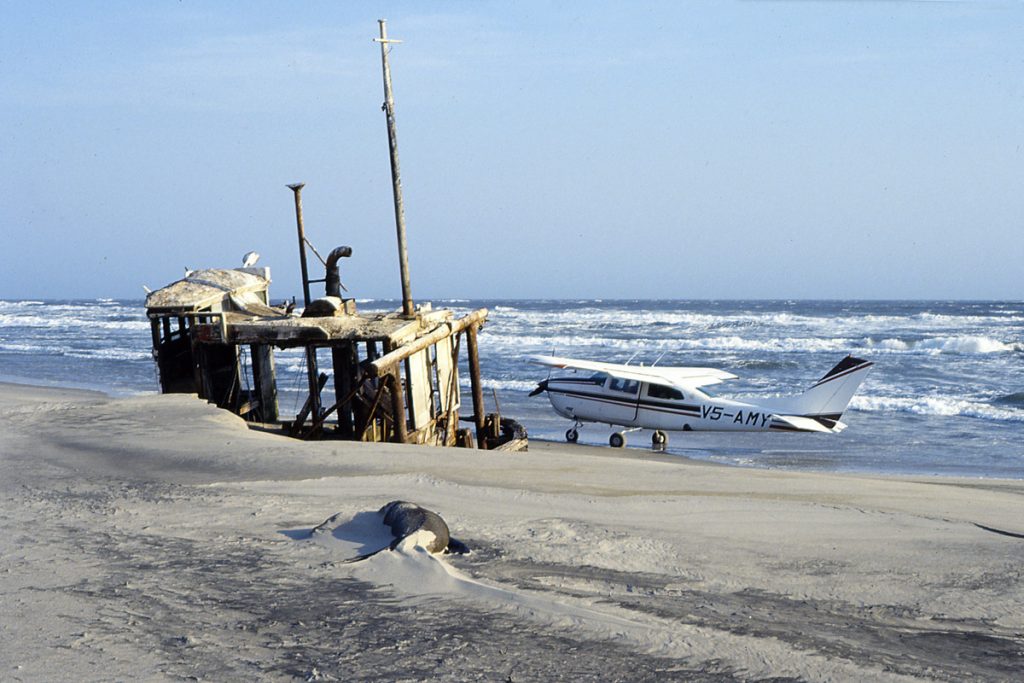
Dropping down onto the beach to examine a ship wreck is all part of the excitement on a Skeleton Coast flying safari
To make it even better, it’s perfectly possible to add nights before and after the flying part. To create a two week itinerary doing this I suggest adding Wolwedans Dunes Lodge or Kwessi Dunes for three nights at the start.
After you return from the Kunene River, which is the last stop on the flying safari, either go tracking rhino in Damaraland at Desert Rhino Camp or Camp Onduli, or go to Ongava Tented Camp for three nights of superb wildlife viewing. Better still, do both; it’s perfectly feasible.
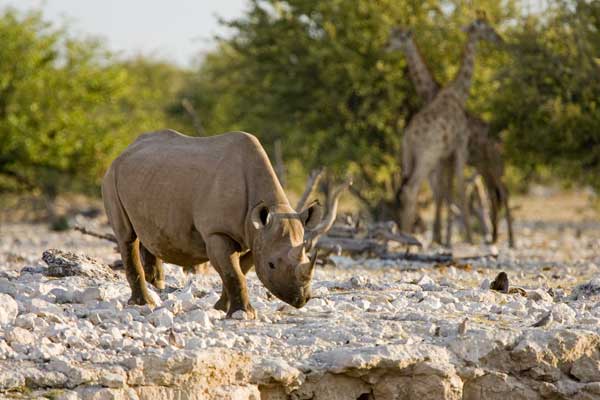
Wildlife spotted on a drive from Ongava Tented Camp
Whichever journey appeals most, it’s wise to book a minimum of eight months before you would like to travel, and if you want the very best lodges or have a larger family or group, at least one year before travel. We are here to help you plan the perfect trip to this incredible, unique country.
What next?
If this has inspired you to dream about future safaris, please do get in touch – we would be delighted to chat, no matter how early in the decision making process you might be. Email is probably the best way to contact us right now and we’ll respond as quickly as we can – usually on the same day. We very much look forward to talking to you.
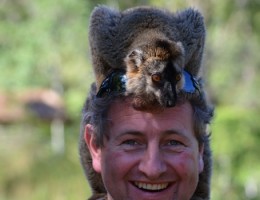
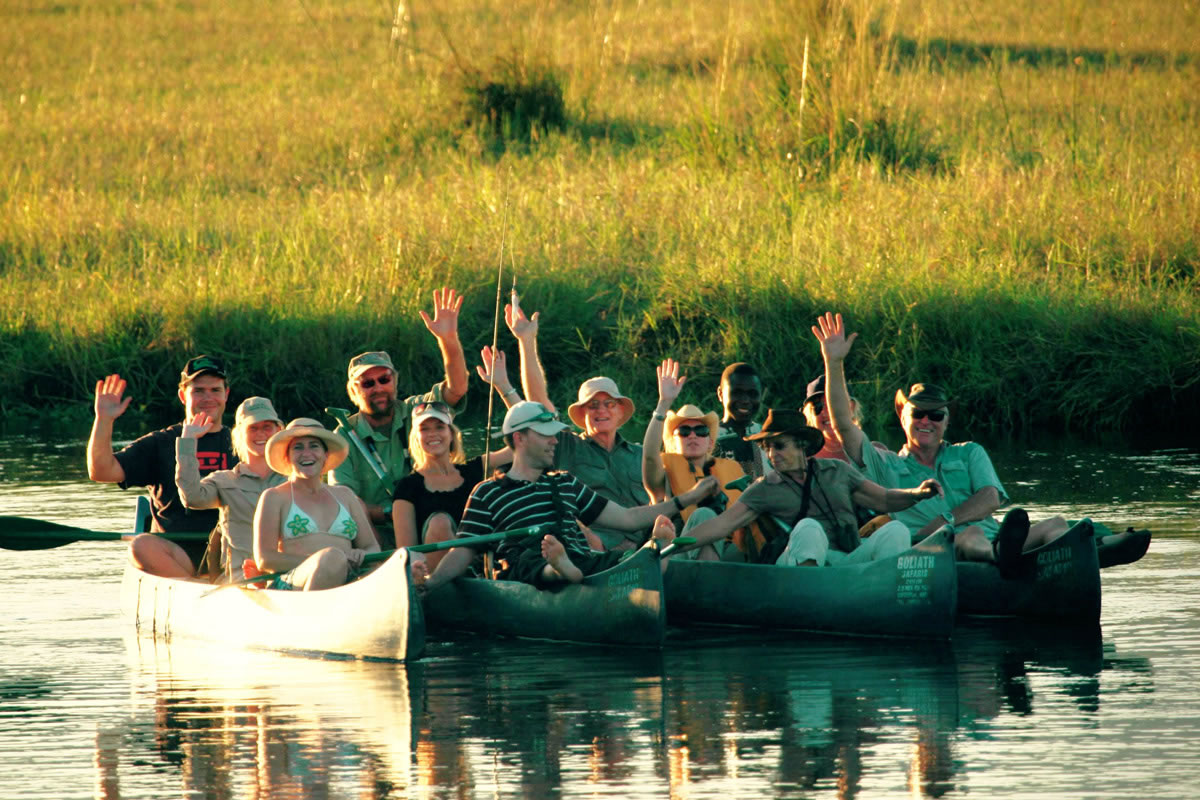
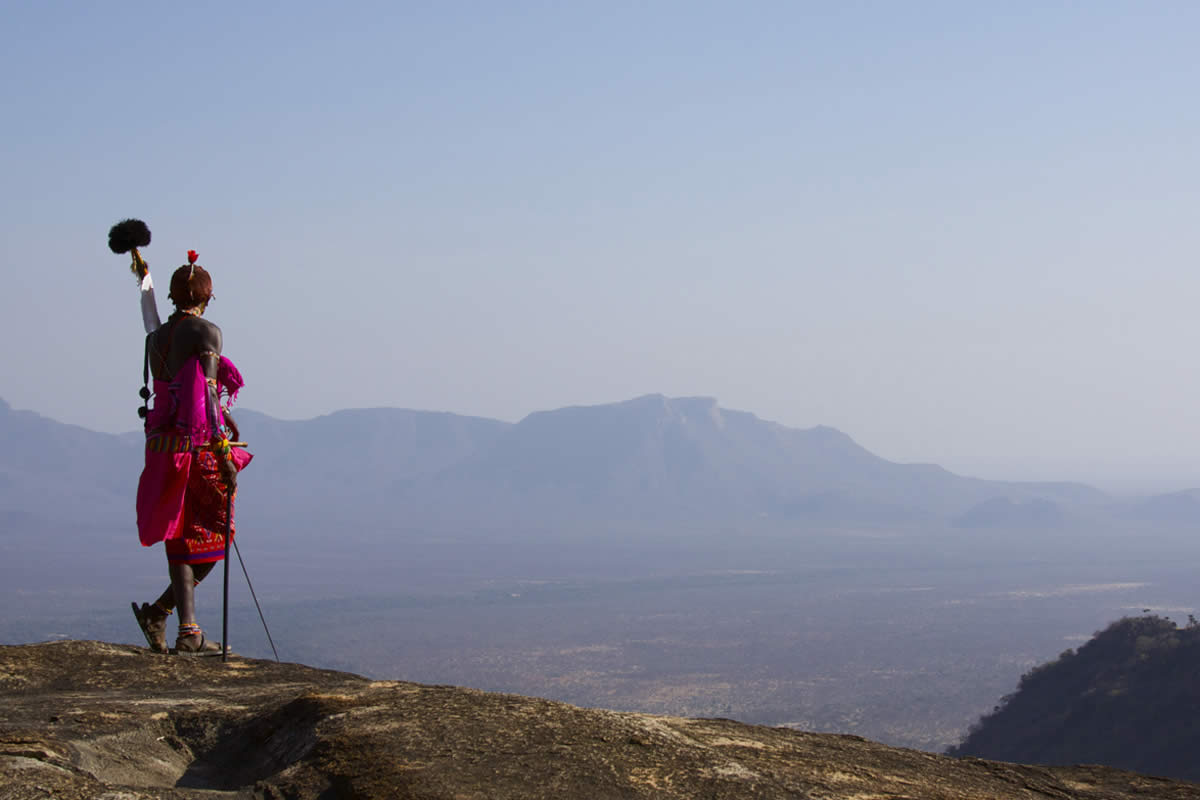
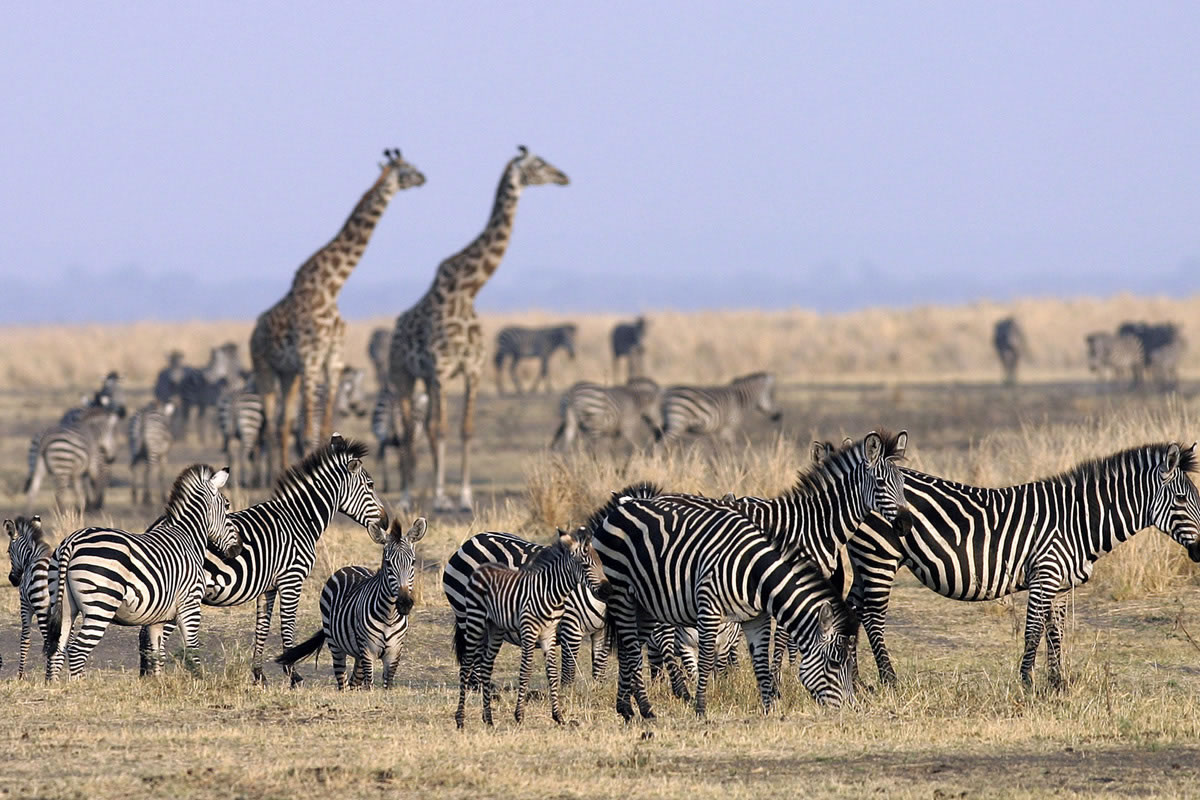

Could you please give us some idea of how long would you recommend for an accompanied safari and the sort of costs we would be looking at, possibly for 2022.? Thank you and Best wishes
Thanks for the question. I will ask one of the team to reply with a detailed answer, but in summary:
– The size of Namibia is such that any less than two weeks in the country would mean limiting the number of areas you were able to visit comfortably. Flying between areas can mean you could combine say three key areas in as little as a week, while you should allow longer of you area driving.
– Costs vary significantly with the lowest costs generally self driving, then guided driven, then flying, but where you stay can also make a difference with motel style the lowest cost, through small camps to fully inclusive safari camps as most costly. It’s important to note that sometimes lower cost initially doesn’t mean better value overall as you’ll not get a similarly good experience and can end up paying for more things on the ground.